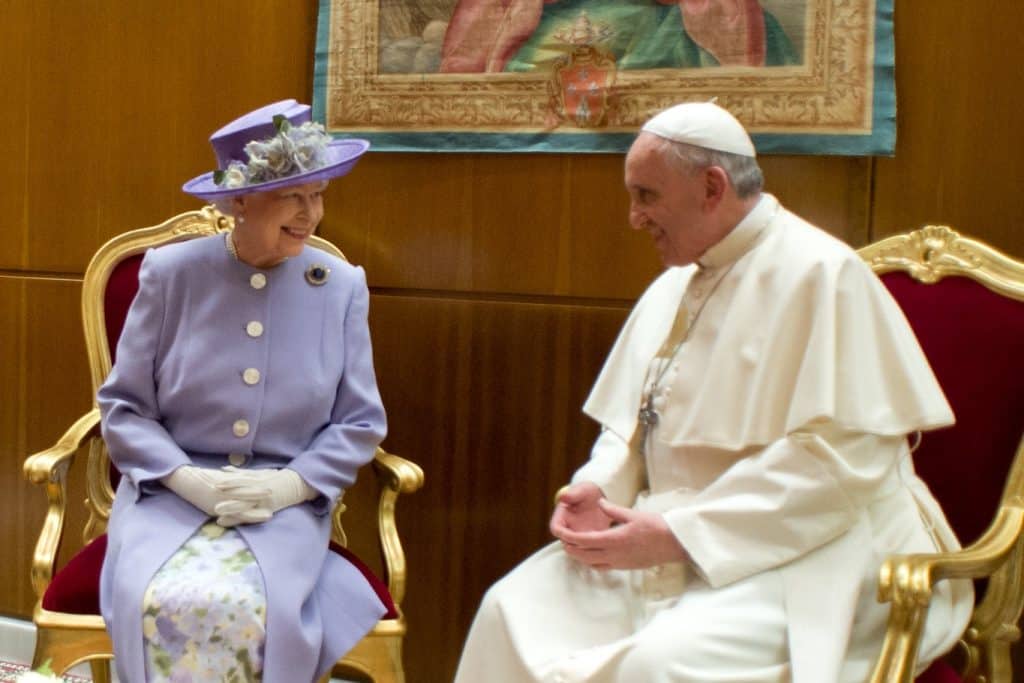Comment by Catherine Pepinster
Each day, it seems, we hear another announcement from Buckingham Palace that the Queen may not be able to attend an event, ceremony or church service.
Today it was announced that she will not attend the State Opening of Parliament because of “episodic mobility problems”, with the Prince of Wales instead reading her speech.
A few days ago, mobility problems were again cited as the reason why she would not attend this year’s garden parties. The Platinum Jubilee weekend is only a few weeks away and there is inevitable speculation that the star of the show — the monarch who has reigned over us for 70 years — will not attend the main events, including the service of thanksgiving at St Paul’s Cathedral and Buckingham Palace’s big balcony moment.
The Queen has said that she needs to be seen to be believed. She is right. Over the decades, she has appeared at countless events, from leading the nation at service of commemoration, to walkabouts among her people. Now, at 96, she is fading into the distance, a small figure occasionally seen on a Zoom call. But it need not be like this, surely?
Another elderly leader who needs to be seen to be believed is the Pope.
Like the Queen, Pope Francis has been having mobility problems and after walking on several occasions with a marked limp, he too disappeared from view. But now he has re-emerged, being pushed in a wheelchair at an audience by a valet from the papal household. In an interview with the Italian newspaper, Corriere della Sera, Francis, 85, spoke of his health condition: “I cannot walk. It also brings a little pain, humiliation”.
It is not so much a case of humiliation, though, being seen in this way, but a matter of humility, and in a leader such as a pope or a monarch, that can be immensely powerful. When the Queen was photographed, masked and alone, at Prince Philip’s funeral, she looked small and bereft. It suggested that she endures the same suffering as her subjects — of being bereaved, and without the comfort during lockdown of being able to sit at the funeral of her beloved husband with another family member beside her.
Monarchs and faith leaders are often seen in their pomp, dressed to convey stature and importance. But the paradox is that for some leaders — maybe not politicians, but moral leaders — vulnerability can have a striking impact, because it runs counter to the all-too-common notion that a leader must actively shape their image and so take on a particular persona. But leaders, honest about their frailty, take on a notable authenticity. The personal story becomes greater than themselves.
At her coronation 69 years ago, the Queen was dressed in the most fabulous garments and jewels for her crowning, but when it came to the most holy of moments, the anointing, she was dressed in a simple white shift, when she committed herself to a life of service to God and the people. It was a moment of sacrifice but also of vulnerability.
Her vulnerability is emerging as a theme in these past few years and it in no way lessens her role as a leader but instead enhances it. So, to be seen in a wheelchair, or even on a mobility scooter, right at the heart of the nation again, would not be a moment for pity but a moment for empathy, respect and celebration of her 70 years of service. It works for the Pope. It can work for the Queen.
Catherine Pepinster is the author of Defenders of the Faith: the British Monarchy, Religion and the Next Coronation, to be published next month by Hodder and Stoughton

















